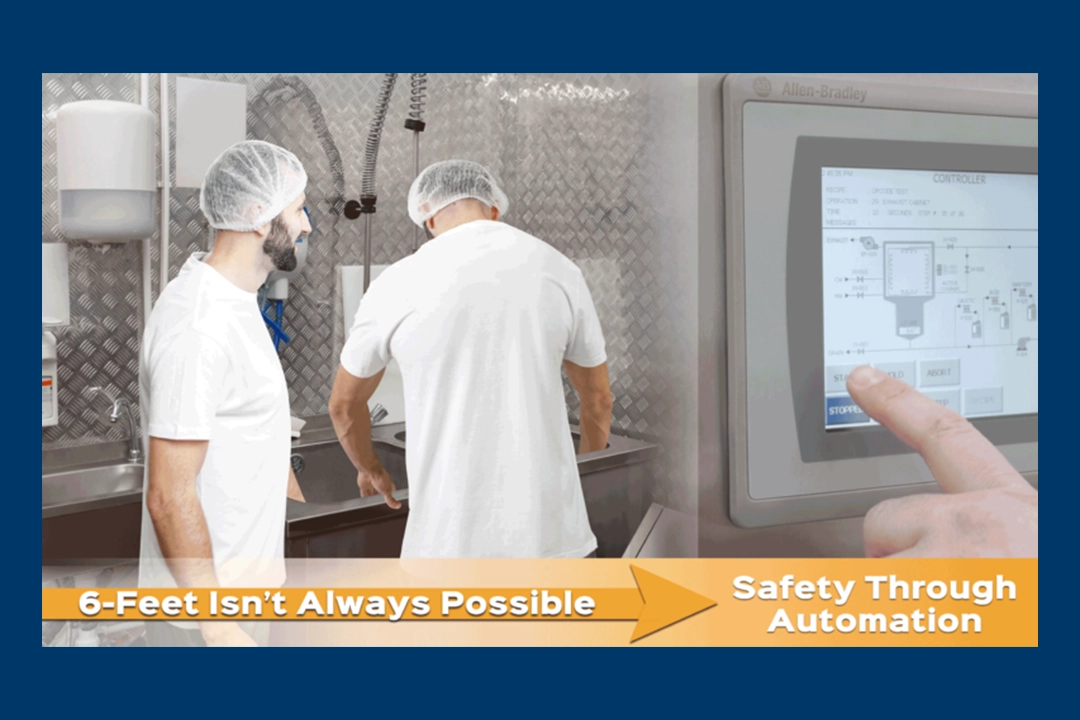Over the past several years, the move toward automated cleaning and sanitation has been steadily growing to enhance productivity, increase sanitation worker safety, repurpose labor, improve water savings, and generate better sanitary results. But now, with the reality of COVID-19 and the threat of future pandemics, food and beverage processors must consider cleaning and sanitation through a new lens—one that can accommodate an environment conducive to social distancing.
Maintaining Safe Distancing with Automated Cleaning and Sanitation Solutions
As multiple food processing plants across the country faced COVID-19 casualties and closures due to close contact production processes, companies began seeking operational changes to accommodate proper employee distancing.
The FDA’s guidance on social distancing for food processing facilities is provided on its Food Safety and the Coronavirus Disease 2019 (COVID-19) webpage.[1] It states, “In food production/processing facilities and retail food establishments, an evaluation should be made to identify and implement operational changes that increase employee separation.”
And, while some processes within the facility may not allow for proper distancing, Chris Purvis, Sani-Matic sales engineer for the central region, describes changes that can be made to support employee separation through automated cleaning and sanitation.
“Before COVID-19, we would see multiple sanitation employees crowded around a utility sink manually washing hoses, fittings, scale buckets, totes, and other process parts, and we’d calculate the production and labor costs associated with that process,” stated Purvis. “We viewed that labor-intensive process through a productivity lens.”
“While improved productivity remains a core benefit of using automated cleaning equipment, we now can’t help but view automation through the lens of this pandemic,” added Purvis. “And, we see automation’s invaluable benefit of minimizing close contact between employees.”
Safety Through Automation
Automated cleaning and sanitation equipment such as Clean-Out-of-Place (COP) Parts Washers, the versatile SaniCab P Series cabinet washer, and Clean-in-Place (CIP) Systems, provide a cost-effective, push-button solution to the challenges of social distancing in food processing.
“Instead of having a washroom full of sanitation employees,” explained Purvis, “with one piece of equipment such as the SaniCab cabinet washer, one employee can load a rack with process parts, transfer it into the washer, and press start. That’s it. One operator, one button, and complete cleaning—in a short amount of time.”
Extending the Safety Lens Beyond Social Distancing
While implementing social distancing is a time-critical safety challenge, other long-standing sanitation safety concerns continue to challenge food processors. Purvis emphasized the ability of automated cleaning and sanitation equipment to address those as well.
“Minimizing operators’ exposure to caustic chemicals and hot temperatures is something companies consistently work toward. Incorporating automated cleaning and sanitation equipment into their sanitation program helps achieve that goal.”


